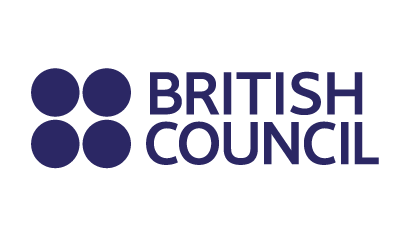How to foster inclusivity in the workplace
In this article, we discuss how to promote inclusivity and diversity in the workplace, so you can ensure that you work in a healthy business environment.

The average person spends a large amount of time at work, so it’s important for employers to try and provide a positive environment. One vital way of doing this is by ensuring that everyone is treated fairly, with dignity and respect. This is where inclusion comes in – every person has the right to feel included, listened to, and accepted in the workplace.
But what exactly does that look like, and how can workplaces advocate for diversity and inclusion? In this article, we’ll explore this and more. We’ll also look at statistics for modern businesses today, why inclusion in the workplace is essential, and some positive examples of companies that create an inclusive work environment.
How can we define an inclusive business?
The Oxford Languages dictionary defines inclusivity as “the practice or policy of providing equal access to opportunities and resources for people who might otherwise be excluded or marginalized, such as those having physical or mental disabilities or belonging to other minority groups”.
So in the case of the workplace, inclusion is about ensuring that people have equal opportunities at work, are treated fairly, and are offered the necessary support and resources that they need. People who are marginalised in some way should also have an equal role in the success of a business or workplace as non-marginalised people.
Inclusion is also closely linked to diversity. In the workplace, diversity means that the workforce is made up of people of different ages, genders, sexualities, races, disabilities, cultural backgrounds and religions. It’s also worth mentioning that having a mix of people isn’t the true key to diversity in the workplace. What’s really important is that all of these people have a range of perspectives, preferences and biases, and all of these differences are respected and valued.
In recent years, we’ve heard the term inclusivity being thrown around quite a lot, and sometimes this can detract from its true meaning. You can listen to educators Dr Louisa Smith and Professor Kelley Johnson discuss the challenges of using the term ‘inclusivity’, especially when referring to disabled people, in this video from our Diversity, inclusion and belonging open step.
However, we hope that the clear advice in this article can provide some clarity on how diversity and inclusion can positively impact businesses and employees.
How inclusive are modern businesses?
Since we’ve all heard diversity and inclusion being talked about more in the past few years, it’s worth looking at the true impact of these conversations. Exactly how inclusive are businesses around the world?
Starting with Europe, new findings from this 2021 Workday survey of over 2,000 HR professionals and business leaders state that one-third of European businesses that took part do not have a diversity and inclusion strategy. In addition to this, more than half of the businesses found diversity and inclusion “a challenge”, and one in ten of the businesses don’t think it’s important.
While this data shows that a good proportion of European businesses are thinking about diversity and inclusion, it also highlights that too many businesses aren’t thinking about how to create a more diverse and inclusive workplace. Furthermore, the fact that half of the organisations in the study find it a challenge to implement suggests that there needs to be more guidance on the matter.
What about the rest of the world, though? In 2020, McKinsey created a global report investigating the business case for diversity and inclusion. Their research encompassed 15 countries and over 1,000 businesses. They found that overall sentiment on diversity was decent – 52% positive and 31% negative. However, the overall sentiment for inclusion was markedly worse, with just 29% positive sentiment and 61% negative.
This really shows how global businesses are becoming more willing to hire a diverse workforce, but they’re not focused on ensuring that everyone’s experience at work is positive. When looking deeper into workplace inclusion, the report found that there were particularly negative sentiments about equality and fairness of opportunity. Clearly, global businesses have a long way to go to ensure that people feel valued in the workplace.


Why is it important to consider diversity and inclusion in the workplace?
It may seem obvious why it’s important to consider diversity and inclusion in the workplace, but there are many reasons why it can improve a business. We’ll go into some more detail about these reasons below.
Employees feel valued
For starters, employees will feel more valued if the business they work for shows that they care about them. When employees feel valued, they feel happier and more productive because it feels like the work is worthwhile and is going to be appreciated.
Enhanced business flexibility and creativity
Employing people with a range of dissimilar mindsets, and embracing the differences, can actually enhance business flexibility and creativity. We talk more about this in our open step on diverse innovation, where we look at the results of research done by The European Institute for Managing Diversity.
Better problem-solving skills
The same research by The European Institute for Managing Diversity found that more diverse teams are more likely to be able to solve complex problems. This is because listening to a range of perspectives and different expertise increases overall knowledge and understanding. We further discuss the benefits of cultural diversity at work in our open step.
More talented employees
This point is fairly self-explanatory – companies that only employ one type of person are missing out on a broad range of talent. If businesses show that they’re not only open to but are actively seeking to hire people of different races, genders, disabilities, etc., they will attract talented people from all walks of life.
Improved customer understanding
The more diverse and inclusive a team is, the more likely they can understand different kinds of customers and therefore approach different target markets. For example, according to Harvard Business Review, a team with a member who shares a client’s ethnicity is 152% more likely than another team to understand that client. This larger customer/client base can lead to business growth, and understanding customers can also lead to higher retention and loyalty.
Better company reputation
Nowadays, companies are well aware that they should be invested in diversity and inclusion. So when businesses reveal that they’re not doing anything to support diversity or inclusivity in the workplace, it can only be seen as deliberate ignorance. Companies that show they care are more likely to gain a good reputation, with employees, customers and the media. Keep in mind, though, it’s essential that businesses demonstrate these values rather than just talk about them.
Higher employee engagement and commitment
Research conducted by author Daniel Pink found that the top three motivators for 21st-century workers were having autonomy, mastery and purpose. Inclusive practices enable employees to gain these things by ensuring that everyone is involved, listened to, and pushed to reach their full potential. Motivated employees are more engaged and committed to their jobs, so this is an excellent reason to care about inclusion.
Increased profits
There is plenty of evidence that suggests diversity and inclusion can increase business profits. For example, research done by Lorenzo and Reeves found that companies with high diversity tended to have higher innovation revenues, and McKinsey found that having higher gender and ethnic diversity at the executive level correlated with higher profitability. Diversity on its own is not enough to boost profits, however; the workforce still needs to have a positive workplace culture in order to be productive.


How to create a more inclusive environment and culture at work
Now you know a bit more about inclusion at work, what it means and why it’s important, let’s get into how you can put it into practice. Diversity and inclusion are not things you can quickly check off a list – you need to make fundamental changes to your business culture and environment in order to fully embrace them.
Educate your leadership team about inclusivity
For inclusive practices to be able to filter down throughout the company, they need to be widely acknowledged and understood by the leadership team. To ensure leaders are on board with diversity and inclusion, it’s important to make sure that they’re comfortable with answering questions from other employees and setting an example.
It can be worth ensuring that leaders and managers receive inclusion training, such as unconscious bias training or our Leading Culturally Diverse Teams in the Workplace course by Deakin University.
Form an inclusion committee
It’s important for businesses to commit to inclusion strategies, and creating an inclusion committee or council is an excellent way to do this. It should be formed of a small group of people within the organisation who are passionate about inclusion and have some time to commit to it. It is crucial that the inclusion committee is made up of a diverse set of employees, but it’s also worth clarifying that the onus for inclusivity doesn’t fall on minorities in the workplace.
The council can be a communication channel between employees and the leadership team about matters relating to inclusion. They can focus on creating positive changes related to company culture, employee experience, inclusive language, accessibility, and more. Our course, Groupthink: Understanding the Need for a Diverse Workplace by Livity is the perfect resource for new inclusion representatives.
It is absolutely vital to be open to feedback when creating an inclusion committee. In our open step about Listening to your team, we discuss in detail how to make the workplace a safe environment for open and honest feedback.
Ensure your physical and digital workspace is accessible
Whether you’re working in an office or working from home, there are things you can do to ensure that your workspace is accessible to all employees. In the office, ensure that there is wheelchair accessibility, disabled parking, adjustable office chairs, accessible plug sockets and accessible toilets.
When employees work from home, companies should ensure that their employees have all the resources they need. In addition, businesses should fully commit to website accessibility (for example, adding alt text to images), record meetings and add live captions, and ensure that all of their technology is fully accessible.
For more information about this, you can learn ten ways to support your team at work in our blog post. You can also learn more about inclusive and accessible design in our Designing for a Diverse and Inclusive Future course by Samsung.
Change your approach to meetings
Meetings are one of the most important times for teams – they’re a chance for everyone to get involved and let their voices be heard. However, meetings can be difficult for people for a number of reasons. Perhaps you’re very introverted, struggle to articulate your feelings under pressure, or find it hard to keep up with the onslaught of information.
To combat these issues, it can be useful to distribute meeting materials in advance and have questions ready to discuss. This gives employees the chance to think about what they want to say ahead of time. It’s also vital that the person or people who are tasked with holding meetings are good communicators and listeners.
If you need some help with communication strategies, our Communicating with Diverse Audiences by the University of Surrey course will offer you some support.
Check-in with employees frequently
To be an inclusive workplace, it’s important that everyone feels as though they’re being well looked after and considered. While inclusion councils can be a great way to discuss larger issues, one-to-one check-ins can be a great way to ensure that employees feel happy.
Looking after mental health and destigmatising mental health issues are an important part of inclusion, so these check-ins can be a good opportunity for employees to state their feelings and concerns.
Support and celebrate diversity
It’s really important to show that you respect the different cultures, religions and traditions of your different employees. One way of doing this is by showing that they can bring aspects of their culture into the workplace.
For example, you might want to set up a prayer or meditation room in your office or ensure that your company calendar celebrates a wide variety of traditional holidays. This may include Chinese New Year, Ramadan, Hanukkah, and Diwali – invite your employees to add any important cultural events to the calendar.
You can learn more about cross-cultural interactions in our Intercultural Communication: Dynamics of cultural identities in global interaction course by Shanghai International Studies University.
Hold events and initiatives for inclusion
Hosting events, discussions and other initiatives are great ways to both celebrate and raise awareness about inclusion. For example, for events like Pride Month, Disability History Month, Black History Month and International Women’s Day, you might want to host an event like a charity raffle or documentary screening, bring in a speaker or create a presentation for awareness.
Final thoughts
Hopefully, this article has given you some food for thought about inclusive work practices. Not only is it a way to make all of your employees feel valued, but inclusivity can have real, tangible benefits for your business. What can you do today to create a more inclusive work culture?












